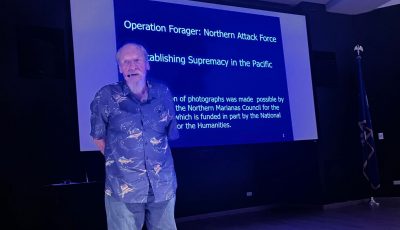Labor, Bridge Project ink MOU on training US workers

The CNMI Department of Labor and The Bridge Project founder Jim T. Arenovski inked yesterday a memorandum of understanding that solidifies their commitment to teach Labor applicants basic work and job search skills so they could land jobs in a tight local market.
Division of Employment Services director Alfred Pangelinan and Arenovski signed the MOU at Labor’s office on Capital Hill. Labor Secretary Gil M. San Nicolas concurred with the MOU, while Labor administrative services manager Barbara T. Sablan witnessed the signing.
Under the MOU, the Division of Employment Services will refer registered applicants to The Bridge Project to be trained. Bridge Project Inc. will then provide U.S. eligible workers a foundation of job search skills to increase their chances of being interviewed and hired. Bridge Project will then provide Employment Services a listing of all graduates that have found jobs and are pending for job referral services.
San Nicolas said that Labor and The Bridge Project share the same goal-to maximize the employment opportunities of U.S. eligible workers in the Commonwealth.
The Bridge Project, which was established in 2011, is a free nine-course “guaranteed job interview program” funded by three grants totaling $97,000 from the Department of the Interior through the CNMI Department of Commerce.
The program is eligible for U.S. workers only. Classes at Marianas Business Plaza in Susupe are limited to 25 people.
Pangelinan said that Arenovski will reserve 15 slots for every session that he is going to hold. “So we will be sending 15 and we will be making sure we will fill that in,” Pangelinan said.
“The good part of this MOU is we have a general registrant listing. By sending them over to Bridge Project Inc. then coming back, telling us who graduated and who will be referred is part of the agreement. We are going to help each other, trying to find people jobs after graduation,” he said.
Arenovski said the MOU will be instrumental in maximizing the amount of exposure of their program to the public.
“We don’t want one seat empty in the class. We want 25 people in the class sitting down. This is a step in the right direction to make sure that we’re maximizing the grant dollars that we’re getting to teach the folks these job skills,” Arenovski said.



























